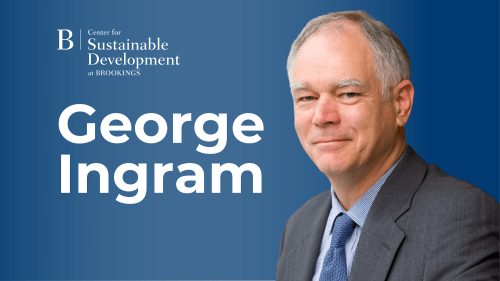Thank you for the opportunity to talk about the big picture issues which impact all of us in the field of humanitarian action.
I’d like to talk about three specific and very different challenges to humanitarian work which pose difficult questions for all of us working in the humanitarian field.
Challenge no. 1. Humanitarian principles are under threat.
For some time now, observers have noted that basic humanitarian principles are under siege from all sides. Governments and the UN often want to coopt humanitarian response into other political objectives. For example, governments, such as the US, see humanitarian response as part of a larger war on terror or in pursuit of specific political objectives. The UN is increasingly using integrated missions in which humanitarian response is ‘coordinated’ with peacekeeping and political negotiations. On the other hand, humanitarian ideals have been challenged by increasingly vociferous critics who point to the ways in which humanitarians have not only failed but how they have often made the situation worse and prolonged conflicts.[1] And there are difficult issues from the field which challenge humanitarian actors every day: how to balance security of humanitarian staff with neutrality? How far to negotiate with non-state actors to ensure humanitarian access? Some have suggested that the days of principled humanitarianism are over and that a more pragmatic humanitarianism is necessary.[2]
In such a world, how does the Red Cross/Red Crescent movement maintain its principles of impartiality, neutrality and independence? How do you balance the need to be realistic, to recognize the political context in which you work, and to adhere to the principles which has made the Red Cross/Red Crescent movement unique? How do you balance the very real need to be self-critical with the need to prevent a further retrenchment of humanitarian space? For communicators, there is the added challenge of how to communicate your actions in such a way that basic principles are affirmed without coming across as terribly naïve.
Challenge no. 2. The relief-development gap is still around.
As humanitarian actors, the Red Cross/Red Crescent movement is active in emergency situations – particularly in preparing for and responding to disasters. But that doesn’t mean you shouldn’t be aware of what comes after the emergency phase is over. At least since the mid-1980s there has been talk about the need for a better transition from relief to development. Countless papers have been written, conferences organized, recommendations formulated, but we still haven’t gotten it right. There is still a gap when humanitarian actors leave and development actors move in. Today, for example, Côte d’Ivoire, Liberia and Sierra Leone are all coming out of serious conflicts, peace agreements have been signed, but development agencies are saying it isn’t yet time for them to begin operations on a large scale. This gap between relief and development isn’t just a question of territories and turf, this is a gap with real human consequences. For example, we know that about half of all resolved conflicts experience a recurrence of the conflict. We also know that displacement and peacebuilding are closely connected. Helping displaced populations to return and reintegrate can simultaneously address the root cause of a conflict and help prevent further displacement.[3] If the immediate crisis is over but development agencies are not yet ready to begin work, what is the appropriate response by Red Cross/Red Crescent societies? Do you continue to work with affected communities? Do you advocate for the involvement of others?
The Red Cross/Red Crescent movement is in a unique position to respond to this gap. Your national societies will be in place long after the international humanitarian agencies have moved on. Cooperation between national societies in the global north and south should offer possibilities of a more holistic response. To what extent is the Red Cross/Red Crescent movement involved in building capacity of its national societies to respond? What does this mean for communicators? On a global level, it means paying more attention to post-conflict societies, tracing the connections between development and peacebuilding. It means continuing to struggle with the very real questions of the balance between coverage of high-profile emergencies and simmering disputes, of being conscious of the role of communications in conflict-prevention.
Challenge no. 3. It’s crowded out there.
We are working in a diverse and crowded field. Not only is the number of non-governmental organizations proliferating on a daily basis, but there are increasingly different types of actors: humanitarian arms of militia groups and political parties, military actors and civilians embedded in military operations, Provincial Reconstruction Teams in Afghanistan and Iraq, for-profit contractors. And I would argue that the media themselves are actors in the international humanitarian system.
In this crowded and diverse field, how should the Red Cross/Red Crescent movement position itself? Perhaps the most obvious response is that you could and should do more to differentiate yourselves from the humanitarian crowd, and particularly from actors which are not exclusively humanitarian actors. The Red Cross/Red Crescent movement is different from other groups. You are not non-governmental organizations. You are not United Nations agencies. You can emphasize your unique role and set yourselves apart from the crowd by highlighting your differences from the others. This is a fundamental strategy for fund-raising as well; NGOs, for example, have an interest in differentiating themselves from other NGOs in order to attract both public and private funds.
And yet, the crowded and diverse world of humanitarian actors raises another, perhaps more difficult question: to what extent do Red Cross/Red Crescent national societies have a responsibility to the humanitarian community as a whole? On the ground, in the midst of a humanitarian emergency, the distinctions that we see as absolute are not perceived nearly as clearly as we think they are. Often one international staff member – whether working for the UN, the Red Cross/Red Crescent, or an NGO – is seen as the same as others. For example, when an international NGO accuses a government of abusing its own citizens, all humanitarian staff working on the ground in that country may feel the effects. When an international staff member raises cultural hackles by behaving inappropriately, the humanitarian enterprise as a whole is weakened. Actions taken by one humanitarian organization have consequences for others. When CARE International staff member Margaret Hassan was murdered in Iraq, all international humanitarian workers in Iraq knew that they were under threat.
So the question arises, to what extent does the Red Cross – or the UN or the NGO world – have a responsibility to bring other, perhaps less professional and less accountable, organizations along? Frankly, it may be more comfortable to accentuate the extent to which we are different from ‘them,’ to emphasize our uniqueness, to set ourselves apart from the larger community. But I would argue that humanitarian actors are interdependent. We are in this together. Actions taken by some affect us all. Is it possible to bring other groups, non-traditional humanitarian groups along? Recently, traveling in the Middle East, I was impressed with a UNHCR country director who made a point of including non-traditional Muslim groups in their regular meetings. These non-traditional groups were providing humanitarian assistance, but they hadn’t had the opportunity – they hadn’t been invited — to participate in UN trainings and coordination meetings for NGOs. Is it possible to bring these groups along? Or is it a better strategy to try even more to distance yourselves from those who are different? This becomes even more controversial when we look at groups such as military forces and for-profit humanitarian actors where most Red Cross/Crescent and NGOs alike try very hard to emphasize the differences. Or is it possible to do both – to emphasize the unique role played by the Red Cross/Red Crescent movement while at the same time reaching out to others?
NGOs face similar questions about how to set themselves apart from other humanitarian actors. But if we’re honest, sometimes the lines aren’t so clear. Some NGOs get 90% of their funds from their national governments – are they really non-governmental? Are they so different from NGOs which are created by their own governments? Or from private contractors who are able to deliver different services, most notably security, or to deliver services differently? In a crowded and diverse field, it is important to be clear about the consequences of our actions.
Concluding thoughts
There are unprecedented challenges for humanitarian actors today. We need to build a constituency for humanitarian action, to encourage the involvement of young people in the humanitarian enterprise and the Red Cross/Red Crescent movement has taken important steps in this regard. Let me close with a few more difficult questions. The line between promoting humanitarian principles – which is part of your mandate — and advocacy is a fine one. When do you sound the alarm about an issue such as the effects of soaring food prices and how do you do so in such a way that your principle of neutrality is not undermined? Do you keep quiet when there are serious human rights abuses, as in Zimbabwe today, relying on other – less-humanitarian actors to do so? As communicators, do you see your main task as communicating about the disaster – or about the actions of the Red Cross/Red Crescent movement? Or both? To what extent does the need for public awareness of your organizations’ efforts in order to secure more funds affect the way in which you communicate what is happening in the field?
There are lots of questions and many challenges facing us all in the humanitarian field. I hope that as you debate specific questions around branding and media strategies this week that you keep in mind some of the big questions which are being raised in this session.
Thank you.
[1] See for example: Fiona Terry, Condemned to Repeat?: The Paradox of Humanitarian Action, Cornell University Press, 2002; Sarah Lischer, Dangerous Sanctuaries: Refugee Camps, Civil War, and the Dilemmas of Humanitarian Aid, Cornell University Press, 2005. “Principles, Politics, and Humanitarian Action,” Thomas G. Weiss, Ethics & International Affairs, Volume 13, Issue 1, Page 1-22, March 1999. “Not Philanthropy But Rights: The Proper Politicisation of Humanitarian Philosophy”, Hugo Slim, The International Journal of Human Rights, Volume 6, Number 2, Summer 2002 , pp. 1-22.
[2] See for example, Peter J. Hoffman and Thomas J. Weiss, Sword & Salve: Confronting New Wars and Humanitarian Crises,” Oxford: Rowman & Littlefield, 2006.
[3] Brookings-Bern Project on Internal Displacement, Addressing Internal Displacement in Peace Processes, Peace Agreements and Peace-Building, September 2007.
The Brookings Institution is committed to quality, independence, and impact.
We are supported by a diverse array of funders. In line with our values and policies, each Brookings publication represents the sole views of its author(s).



Commentary
Challenges in the Humanitarian Field: The Big Picture
April 29, 2008